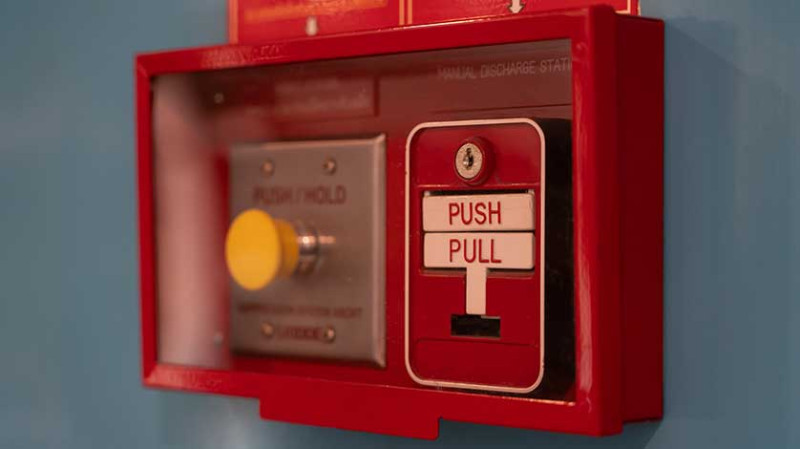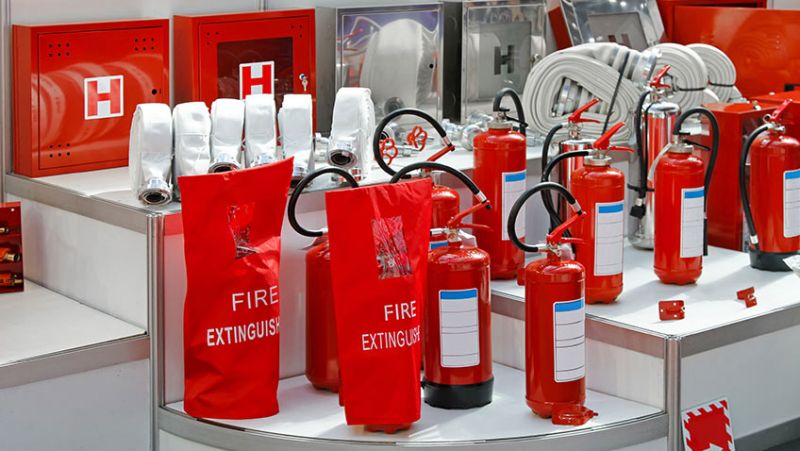
Fire safety is a top priority for any homeowner, business owner, or professional in the construction and design industry. One of the most effective ways to protect lives and property is through the installation of a reliable fire alarm system. Addressable fire alarm systems represent the latest in fire detection technology, delivering improved precision, efficiency, and monitoring capabilities. Whether you're a DIY enthusiast upgrading your home, a young professional revamping a flat, or an architect designing a new building, understanding how addressable systems work can help you make informed decisions that enhance safety and compliance.
What Is an Addressable Fire Alarm System?
An addressable fire alarm system is a type of fire detection setup that allows each device—such as a smoke detector, heat detector, or call point—to have a unique address. This means the system can pinpoint the exact location of an alarm trigger, making emergency response faster and more effective.
Unlike conventional fire alarm systems, which group devices into zones, addressable systems provide detailed information on where the alarm originated. For example, instead of displaying “Zone 1 Alarm,” the system will display “Room 203, East Wing.” This feature is particularly useful in larger premises such as office blocks, apartment buildings, and commercial properties.
This precision is crucial not only for fire safety but also for minimising business disruption, reducing false alarms, and improving compliance with UK fire safety regulations, including BS 5839 standards.
Benefits of an Addressable Fire Alarm System
There are numerous advantages to choosing an addressable fire alarm system. These benefits apply whether you're working on a home renovation project or managing large-scale architectural developments.
- Pinpoint Location: Immediate identification of the exact device that triggered the alarm speeds up evacuation procedures and helps fire services respond more effectively.
- Reduced False Alarms: Advanced programming helps reduce the number of false alarms caused by dust, steam, or minor electrical issues.
- Scalability: Perfect for both small homes and large commercial premises, these systems can be expanded as required without major rewiring.
- Remote Monitoring: Many modern systems come with remote access features, allowing users to monitor the system via smartphone or desktop applications.
- Comprehensive Data Logging: Keep a recorded history of events for audit purposes or to analyse alarm trends and troubleshoot recurring problems.
By installing an addressable system, you ensure a smarter and more efficient way to detect and respond to fire threats, which is particularly important for tenants, employees, and visitors who rely on early warnings in emergencies.
How Does It Work?
The core of an addressable fire alarm system is its control panel, which constantly communicates with all connected devices. Each detector or sensor has a digital identifier known as an "address." When smoke, heat or manual intervention triggers one of the devices, that device sends a signal back to the control panel, indicating its unique address and the type of event.
The result is a highly intelligent system where you’re not just notified that a fire may exist—you’re told exactly where and what type of detection has occurred. This immediacy can make all the difference in an emergency.
In some cases, especially in larger installations, the system can also automatically trigger other integrated actions such as unlocking fire exits, shutting down air systems to prevent smoke spread, alerting emergency services, and sounding specific evacuation alarms appropriate to the location.
Addressable vs Conventional Fire Alarm Systems
Both conventional and addressable fire alarm systems have their place in the fire safety landscape, but each type brings significant differences in terms of functionality, cost, and setup.
| Feature | Conventional System | Addressable System |
|---|---|---|
| Identification | Zone-level Only | Exact Device Location |
| Cost | Lower Initial Cost | Higher Initial Investment |
| Scalability | Limited Expansion | Highly Scalable |
| Maintenance | Harder to Troubleshoot | Easier Fault Detection |
| False Alarm Management | Minimal Controls | Advanced Logic and Analysis |
While conventional systems may be suitable for small-scale applications, addressable systems are generally preferred for their long-term efficiency, especially in workplaces, apartments, and public buildings where precision and reliability matter most.
Who Should Install an Addressable Fire Alarm System?
If you’re a homeowner looking to achieve a premium level of safety, an addressable fire alarm system can offer peace of mind far beyond what's possible with battery-operated or conventional alarms.
For property developers, landlords, or maintenance contractors, implementing this type of system can assist in meeting your legal requirements under the Fire Safety Order and create a safer environment for tenants.
Architects and designers can benefit from the flexibility of addressable systems by integrating them seamlessly into smart homes and energy-efficient buildings. Their programmable features allow for tailored installation depending on building layout and usage.
Professional electricians and fire safety engineers in the UK should consider becoming familiar with addressable systems, as demand continues to grow across residential, commercial, and industrial sectors, especially for retrofit projects.
Planning and Installation Tips
Installing an addressable fire alarm system requires proper planning and usually professional assistance, but understanding the process is beneficial even if you're not performing the installation yourself.
Before beginning, conduct a comprehensive fire risk assessment to determine the types and locations of detection devices needed. This ensures you optimise coverage while remaining compliant with UK regulations.
Next, choose a suitable control panel that matches the scale of your project, number of devices, and integration needs. Ensure it is certified to UK and European standards (such as EN 54).
You must also factor in cabling infrastructure. Most addressable systems use a loop configuration, where detectors are wired in a loop that returns to the control panel, enabling constant communication and automatic testing of devices.
Lastly, don’t skimp on commissioning and testing. Hire a qualified fire alarm contractor to set up, programme, and test the system before signing off. Routine maintenance, ideally every 6 months, is essential to keep your system running optimally.
Conclusion: Invest in Intelligent Fire Safety
If you're serious about fire safety, an addressable fire alarm system is a worthwhile investment. Not only does it offer early warning and precise detection, but it also brings modern convenience and better integration into today’s smart buildings.
Whether you’re upgrading a private residence, working on office space conversions, or designing buildings with complex layouts, addressable systems give you the flexibility, reliability, and long-term value your project deserves.
Looking for guidance or professional installation across the UK? Partner with qualified fire alarm specialists who can design, install and maintain systems tailored to your property’s unique needs. Fire safety starts with informed decisions – and you're already taking the first step.



